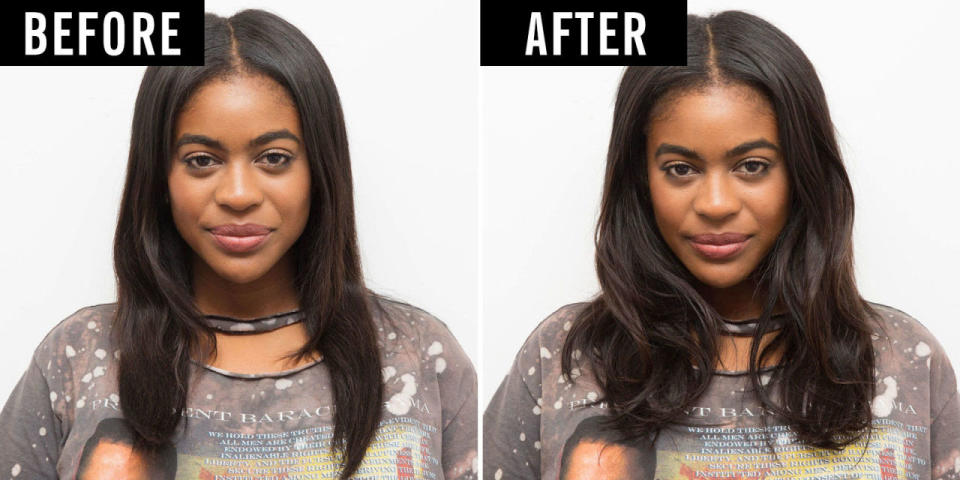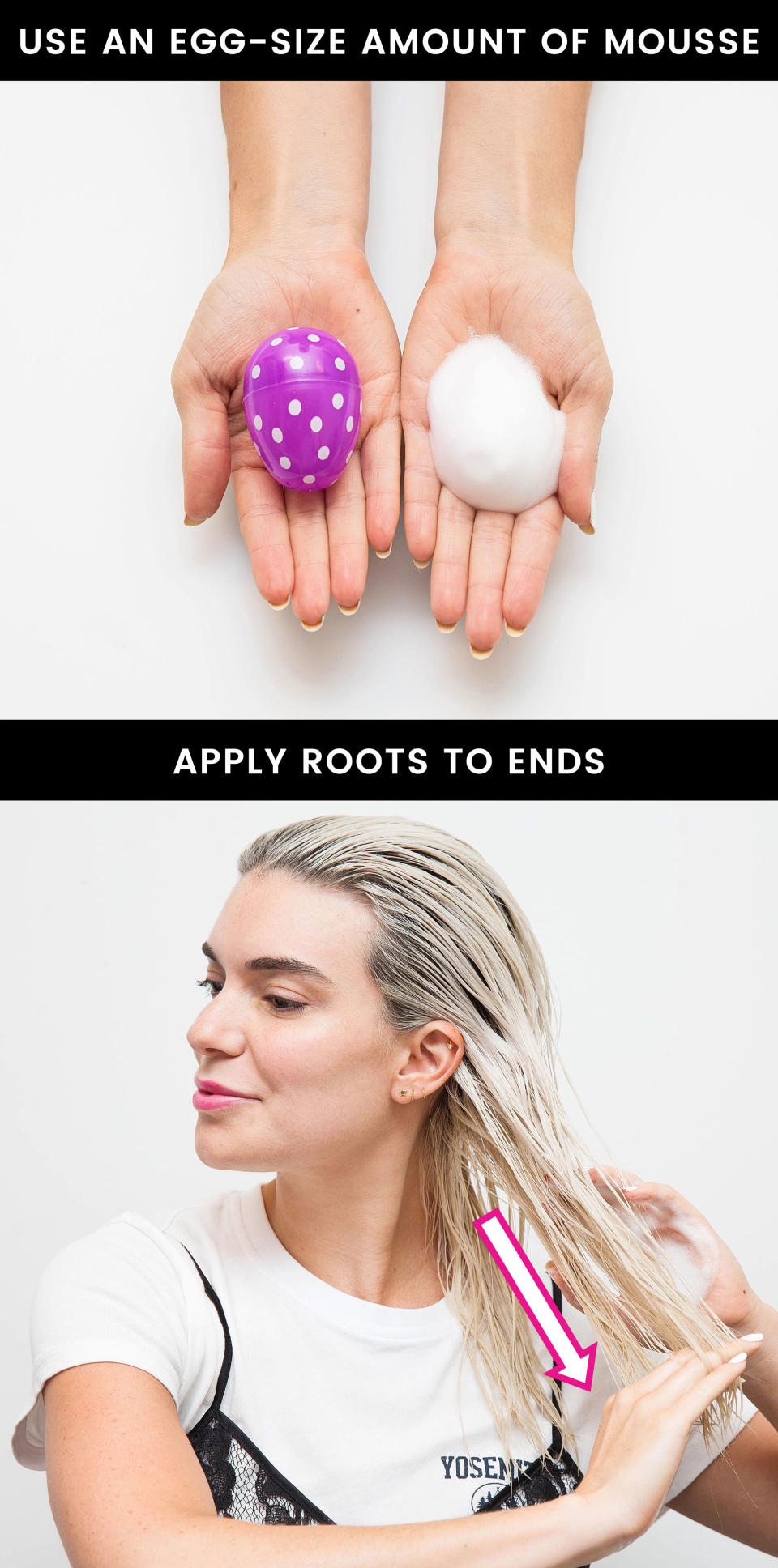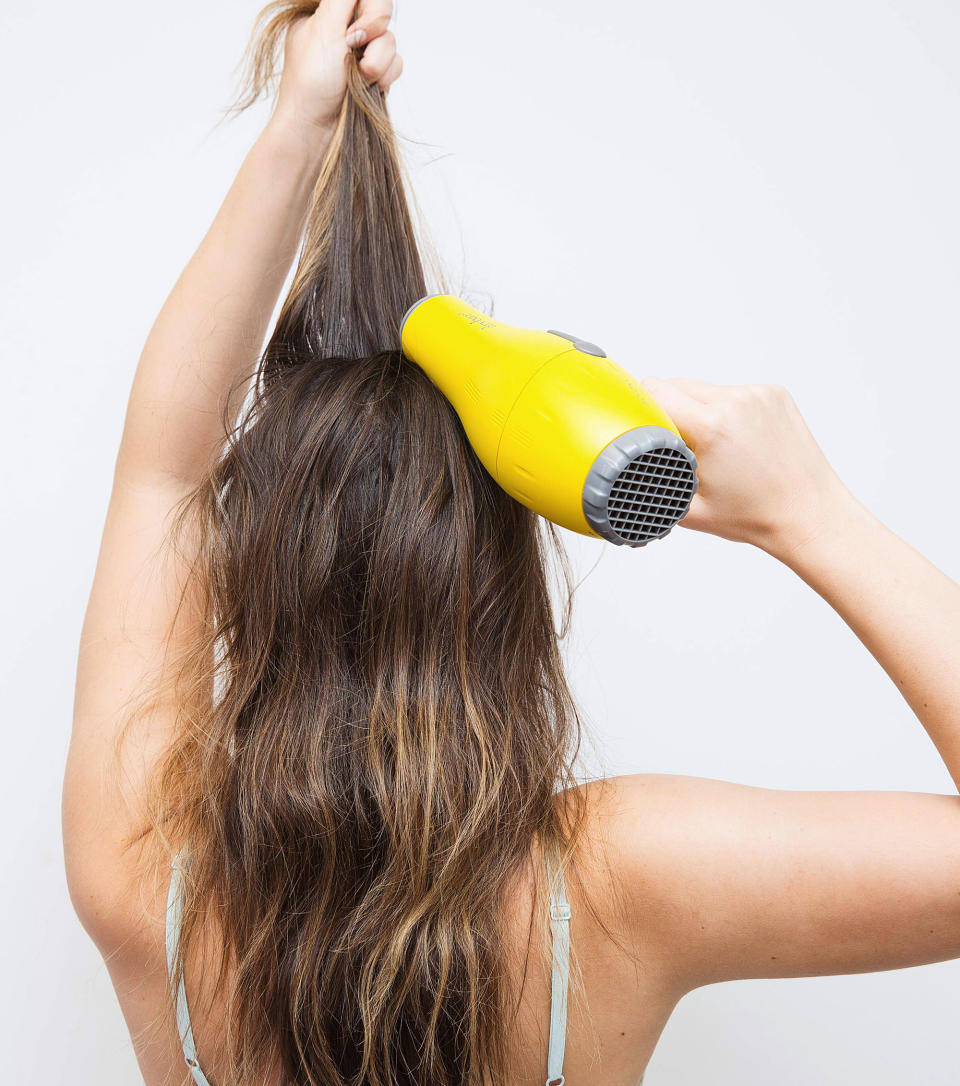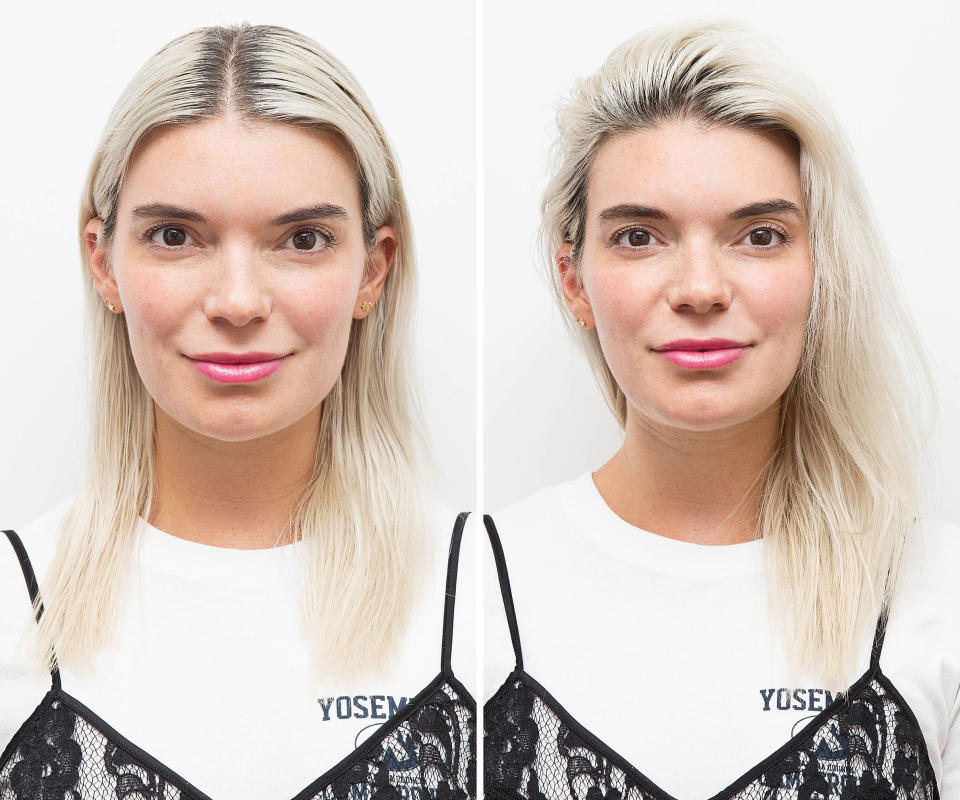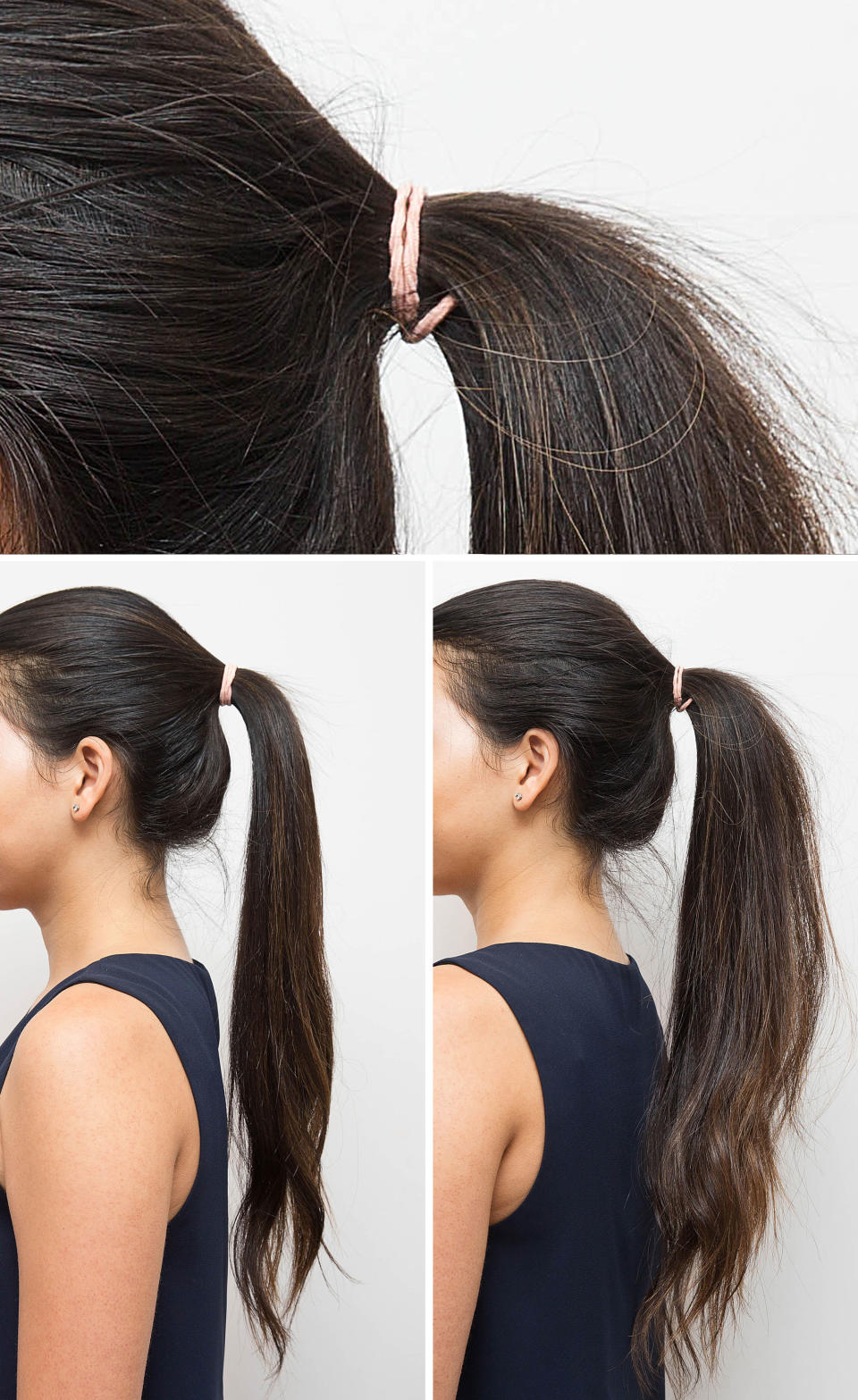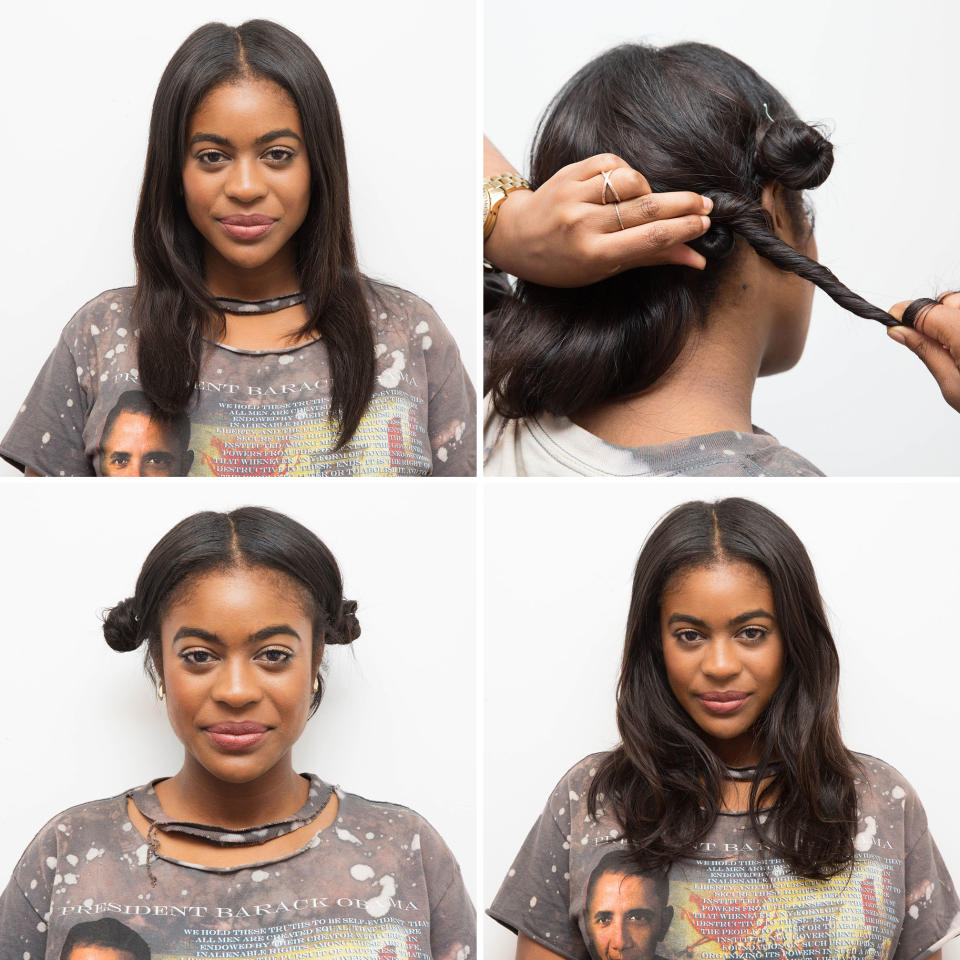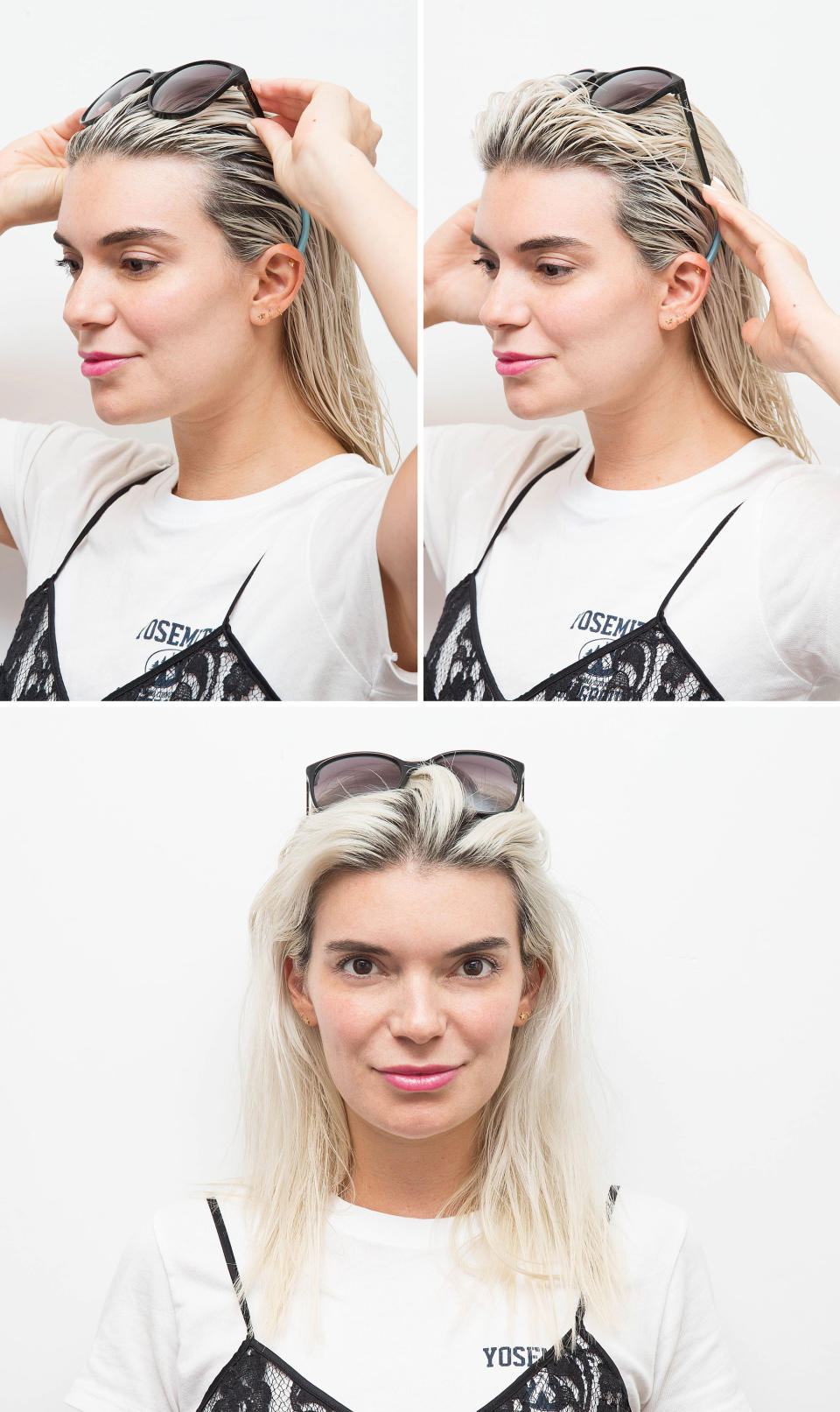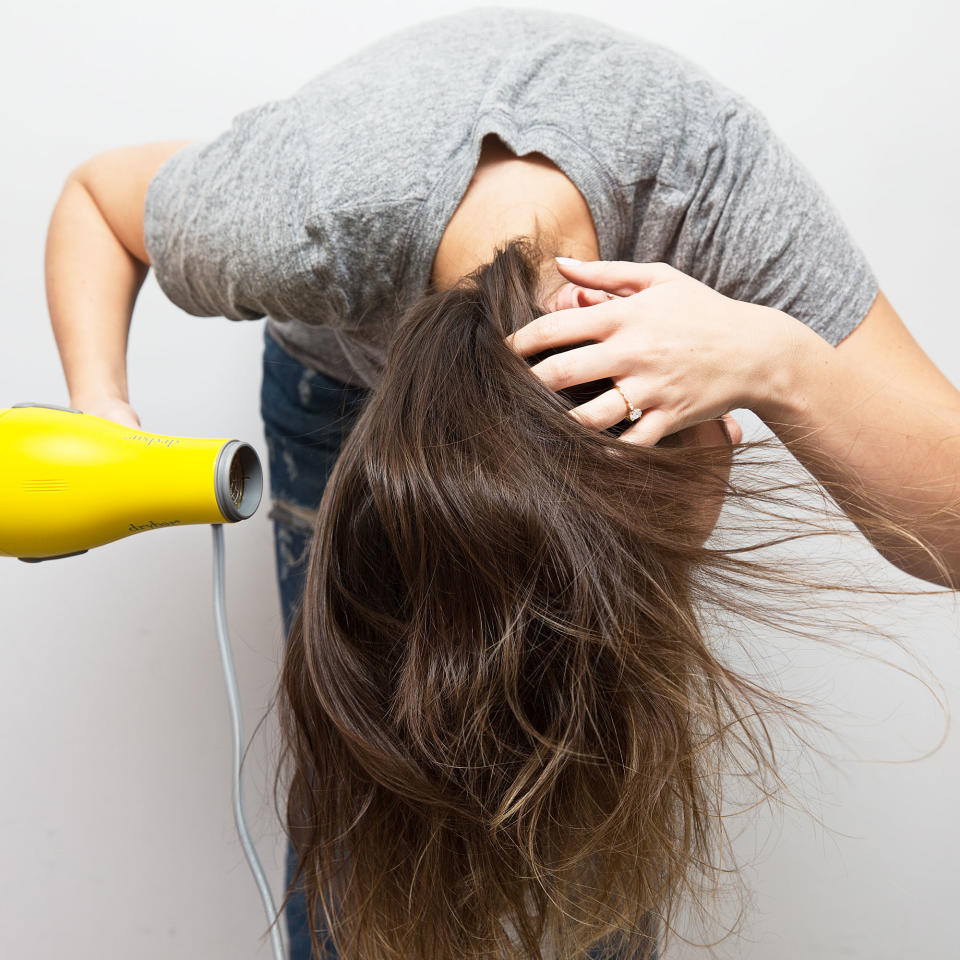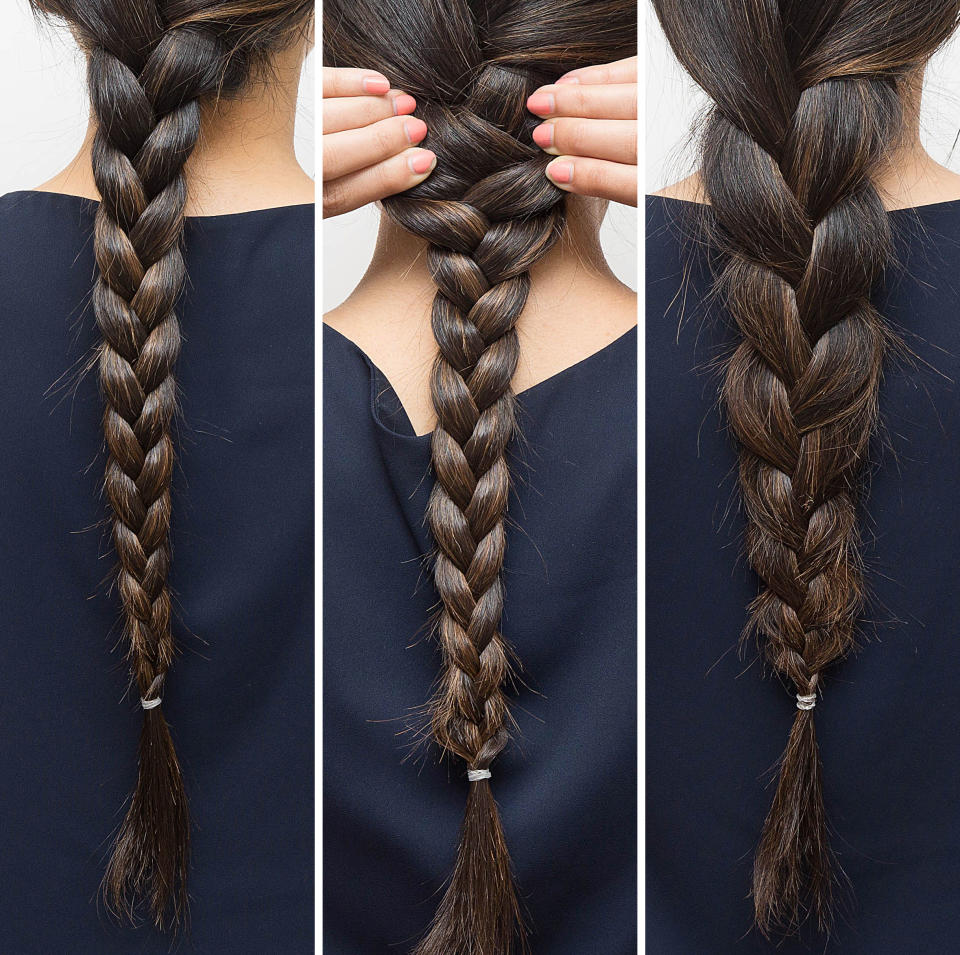Yup, It’s Legit Possible to Get (or Fake) Fuller, Thicker Hair
Look, I'm all for embracing what you're born with, but every now and then I dream of trading my fine hair for thicker, fuller, more volumized strands. Is that so wrong?! If you share my feels, then (1) let's bond over it and vent together some time, and (2) join me as I learn exactly how to get thicker hair from Gretchen Friese, certified trichologist from Bosley Professional Strength, and Anabel Kingsley, head trichologist and brand president of Philip Kinglsey. Below, the experts explain how to get thicker hair—starting with if it's even possible—and how to fake it in the meantime.
Is it possible to make hair thicker?
Friese explains it best: "The thickness of the hair most often is determined by the size of the hair follicle," she says. "As we age, the size and shape of the follicle changes and can shrink, which results in thinner hair. Keeping the follicle healthy and open will help to create a thicker strand of hair." To keep those follicles as healthy as possible, Friese recommends regular cleansing and exfoliating (your scalp is an extension of your face, after all) with a scalp scrub to keep it free of build-up and dead skin cells.
Can thin hair become thick again?
Well, first, let's make sure we're using the right terminology here because "fine" hair and "thin" hair are two different things (I am also guilty of using these words interchangeably, FYI). Friese explains that the terms "thickness" and "fineness" actually refer to the diameter of each strand, whereas "thin hair" refers to how many hairs are on the head. The fewer hairs you have overall, the thinner your hair—even if each of these hairs is, technically, thick. Make sense? Let's move on.
According to Kingsley, you can break down thinning hair even further into two different kinds:
Androgenic alopecia or reduced hair volume. This genetically predisposed condition is where the individual hairs on your scalp gradually become finer and you produce more hairs that are thinner and shorter.
Telogen effluvium. The second form of thinning is when there’s actual hair loss occurring, and that's called telogen effluvium. Kingsley says this is a reactive hair loss, and is not genetic. “It’s triggered by some sort of internal disturbance or imbalance, such as a high fever, nutritional deficiencies, hypo or hyperthyroid, or rapid weight loss,” he says.
Good news: Friese says hair often can be regrown, but you'll first want to figure out the reason for the hair loss. Talking to a medical professional about solutions should be your first step to determine if it's caused by something internal, like an autoimmune disorder or vitamin deficiency. After testing, they can suggest the right hair supplements, diet, or products for your specific needs. But if you're thinking you fall into the category of plain ol' fine hair, keep reading.
What products thicken hair?
The right products to make your hair appear thicker ASAP really depend on your hair type and hair needs, but a good place to start is with formulas that will add texture, boost volume, and conceal sparse spots. We're talkin' texturizing sprays, salt sprays, dry shampoo, volumizing products, root touch-up kits, hair extensions, and mousse.
But here’s the thing: Applying all of the above to your roots and strands every single day without taking a break or washing it out will put a hard stop to your journey toward thicker hair. As Friese points out, oils and product can weigh the strands down, which makes it look dull and flat—even more reason to wash your hair more often.
How can I get thick hair fast?
You probably know by now that there is no magical hair growth oil or natural remedy that'll make it easy to growing your strands longer or thicker overnight. But what do you do when you have an event, like, tomorrow and need some help ASAP? You use the below tried-and-true tips that are approved by this flat-haired girl right here.
1. Wash your hair—with the right shampoo
Forget what you’ve been told about dirty hair being the secret to volume. Yes, this is the third time we're talking about washing your hair, but it's important! Kingsley stresses that frequent cleansing (at least every other day) not only helps to keep your scalp healthy to support hair growth, but it also removes excess oils at the roots, which is "especially important for fine or thinning hair, as it easily gets weighed down,” Kingsley says.
Plus, skipping out on shampooing too often—or relying on a constant stream of dry shampooing instead—can also lead to a flaky scalp, says Kingsely, "which can exacerbate hair loss.” Don't know which shampoo to use? Look for words like "volumizing" or "thickening" on the label, and you usually can't go wrong.
2. Deep condition
Another lie you've been told is to avoid conditioner like your ex. Wrong! Breakage and split ends are the worst, especially when you have thin, fine hair. As your hair breaks off, your mid-lengths and ends become even thinner, so Kingsley suggests using a hair mask or deep conditioner to help prevent the damage from happening. If you use it as a pre-shampoo treatment, and you won’t run the risk of weighing down your hair.
3. Enhance (or create) some shape
Look, there's a time and a place for a sleek, straight hairstyle, but if you want major volume and body to make your hair look thicker, embrace your natural curls, coils, or wavy hair. The right curly hair products for your curl type (don't sleep on mousse for bouncy curls!) will make your spirals springy, smooth, and defined and stop them from feeling weighed down. And if you're someone who also has naturally dead-straight hair on top of having fine or thin strands, add a little shape to it with a curling wand or heatless hairstyle on damp hair to make it appear thicker. You'll be surprised what kind of illusion you can create with a little texture and beach waves.
4. Try a new hairstyle
The right haircut and hair color combo can instantly make your hair look fuller, lighter, and all-around thicker. Even if you have to take a few inches off, a blunt bob haircut will make fine hair look so much bigger and more voluminous than longer hair with lots of thinned-out layers. Even better, get a few highlights or balayage, and you'll instantly add dimension, body, and movement to flat, lifeless strands. Just tell your stylist how to get thicker hair. They'll know the best look for you.
5. Tease your roots
Teasing or backcombing—or whatever you want to call it—is the ultimate trick for creating volume at your roots. Take a small section of your hair and hold it up and away from your head. On the underside of the section, insert a fine-tooth comb and gently push the hairs toward your head (think of it as the opposite of combing your hair). Then, hairspray each section at the roots. Continue doing this in small sections to create the height and shape you want, and finish by lightly smoothing over the top layer of hair to hide the teasing underneath.
6. Use a water filter
Hard water (water that’s naturally higher in minerals) is particularly hard on fine hair that's prone to buildup. Allll that hard water buildup is the enemy and leads to flat, limp, greasy, strands and lots of scalp probs. By switching your shower head to a filtering one, you'll remove some of those minerals to stop the buildup that's preventing you from having hair that looks and feels thicker and fuller.
You Might Also Like
